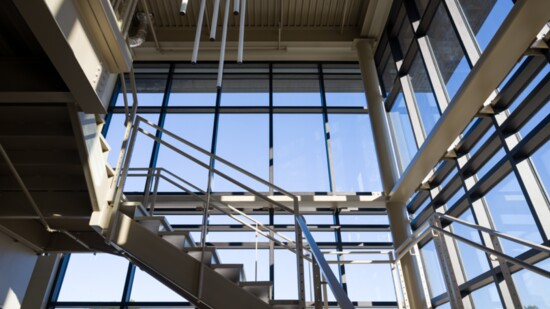In these days of staggering medical costs – sometimes high enough to bankrupt even the most financially responsible – and longer lives that come with more maladies tagging along, the need for medical relief on the body and wallet alike is greater than ever.
Fortunately, Conroe has what amounts to the Florence Nightingale of such healthcare providers: the Lone Star Family Health Center. This state-of-the-art facility has offered top-tier medical services to the less fortunate in our community for over two decades.
The not-for-profit center has been undergoing a major expansion that is drawing to a conclusion. Karen Harwell, the center's chief executive officer, has been overseeing the complexities of the expansion for more than a year, as well as the day-to-day operations of the facility itself.
Harwell not only has extensive medical experience but also a longstanding relationship with Lone Star. Originally the chief financial officer starting in 2012, she assumed the mantle of CEO in 2017. Before joining Lone Star twelve years ago, she worked in private practice for a large specialty medical group as its director of finance.
Lone Star is what is known as a Community Health Center, the product of a movement that started in the Civil Rights Era of the 1960s. Though the center in Conroe did not begin until 2002, a residency program established in the 1970s gave medical students seeking residency a chance to practice family medicine locally.
“So we formed in 2002, and right after formation, the original CEO, Doctor Alvin Jones, had the great idea that, ‘Hey, there’s actually federal funding out there for clinics just like ours, as long as we're targeting it right.’ So he applied to get that designation as a federally qualified health center.”
Under the Department of Health and Human Services’ Public Health Service Act, to qualify, the organization must be not-for-profit, community-led by a board of directors, and at least 51 percent of those board members must be patients of the health center.
The formula used to assess the need for a community health center and the populace it serves is complex and includes factors such as the low ratio of primary care providers for the population, the percentage of the low-income population, and the amount of need and the ability (or lack thereof) to pay for it. Funding from the federal government provides a flat, fixed amount of funds that must go to the patient in the form of sliding fees.
Though the center has grown over the years, a recent massive expansion program is taking Lone Star to the next level.
“In 2010, there were cash reserves that had been built up for expansion,” said Harwell. “But around 2014, there was a lot of interest in adding funding at the federal level to all health centers, and so suddenly, there were all these grants that were available to just start new sites. So we actually went through really rapid growth with our feeder satellite clinics, adding four of them between 2014 and 2020.”
The center’s cash reserves, money from private and public grants, a loan, and additional funding from an atypical source lent themselves to the expansion of the center's main facility.
“2014, leading to the Affordable Care Act, was what created a big amount of federal investment in health centers. But the next round of funding was COVID funding we received via a grant,” Harwell said. “Some of the funds had to be put toward expansion; that was the point of the grant. So we chose to not build another new site but instead expand the core of the hub-and-spoke kind of setup, which is just unique to us, so that as we grow we have a specific central space here to go with our current and any future satellites. So we’ve actually got that now, which is great because part of our new space is dedicated to establishing ‘pods’ in this building.”
The pods are dedicated areas for specific needs. For example, with the expansion, the center will now include a mental health pod; instead of a too-public check-in area with an open waiting room, patients can enjoy more privacy with a separate waiting room and designated check-in staff.
The expansion of nearly 30,000 square feet will bring the center's total area to 100,000 square feet. Pre-expansion, space was limited and mutable. The additional space opens up clearer patient pathways—literally and figuratively—and enhances staff working areas. The modularized pods and a vastly improved pharmacy will also be highlights. Alongside the physical expansion is the installation of enhanced infrastructure.
“We’ve been on the same medical record system since 2002, so you can imagine how difficult it is keeping up with the demands of the digital age. We’ve been forced to use physical paperwork and phones, but with the new system, people will have better access, and everything will become a lot more efficient,” said Harwell.
The center recently received two grants to help expand its services along with its surface area. The first grant totaling $500,000 from the Human Resources and Services Administration (HRSA) Acceleration Cancer Screening Program allows the center to enhance screening and referral rates for breast, colorectal, and cervical cancer. The second grant awarded was $1,100,000 from HRSA to expand behavioral health services, including increasing the availability of counseling, psychiatric services, and substance abuse treatment.
The expansion of nearly 30,000 square feet will bring the center's total area to 100,000 square feet. Pre-expansion, space was limited and mutable. With the additional space, it opens up clearer patient pathways—literally and figuratively—and enhanced working areas for staff.
